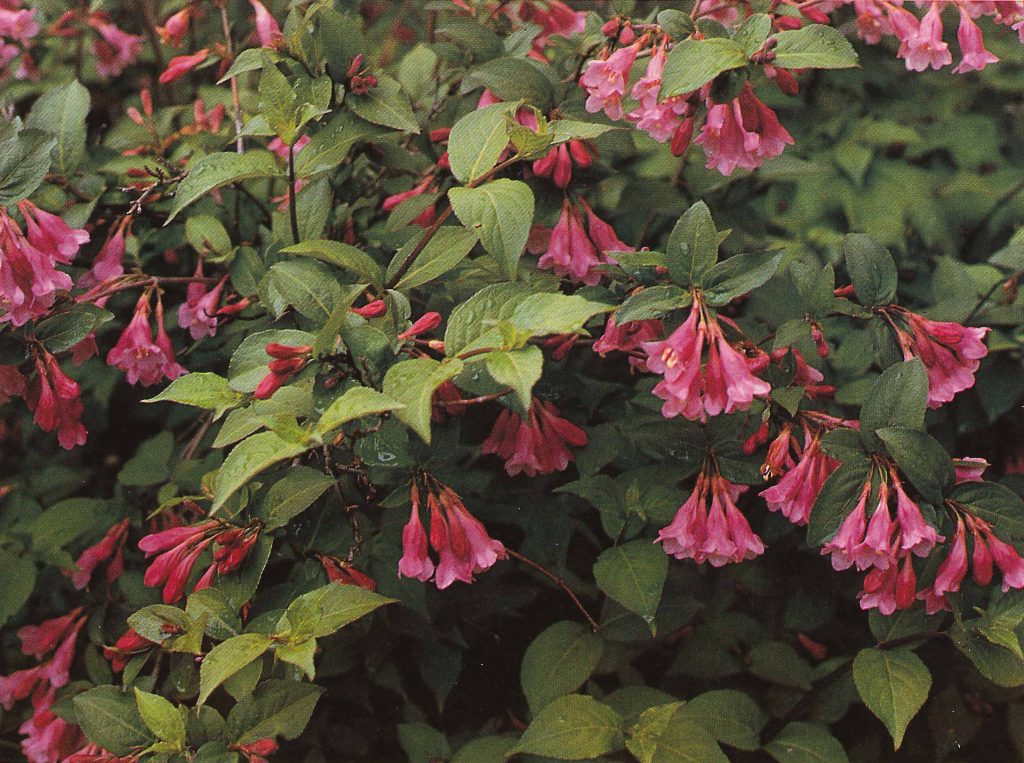EXPERIMENTAL CULTIVATION AND EVALUATION OF NEW, HORTICULTURALLY VALUABLE LIGNOSES
Trial cultivation and testing with subsequent selection of horticulturally valuable lignoses is a long-term process in which not only the Nordic institutions represented in NAU participate. The committee’s main task here is to, insofar as the resources of the participating institutions allow, ensure that horticulturally promising trees and shrubs are grown in as many climate zones as possible and that an initial evaluation of these trials becomes available to the institutions that will proceed with the material.
For the southern hemisphere material, this first evaluation was completed in the late 1980s. As expected, it turned out that the Faroe Islands and Western Norway have had the most success. For the other parts of the Nordic region, the results are worse. A factor that significantly worsened the conditions for the further culture of many species there was the extremely cold winters that affected large parts of Europe in 1985-1987. Very few southern hemisphere plants managed these. All the more gratifying were the results in the Faroe Islands, which are detailed in the book “A century of tree-planting in the Faroe Islands” (Torshavn 1989). Experiments during the 20th century have, despite many setbacks (especially the hurricane in 1988), resulted in a number of plantations, which, in addition to being important for the well-being of the Faroese, have also been able to form important trial areas for the new trees and shrubs from the Southern Hemisphere.
Among the species collected during Utval get’s expeditions and which have already been made available to the private growers in the Faroe Islands are the southern beeches Nothofagus pumilio and N. betuloides, as well as the conifers Araucaria araucana, Athrotaxis cupressoides and Libocedrus bidwillii. Ornamental shrubs beginning to spread in private gardens include South American Berberis species, Buddleia globosa, Cassinia vauvilliersii, Chiliotrichum diffusum, Embothrium coccineum, Fuchsia magellanica, Hebe species, Hoherla glabrata and Pernettya mucronata.
For many in the gardening industry in the Nordics, most of the listed species are probably completely unknown. The selection also gives an idea of the very special Atlantic climate.
In Western Norway, the winter of 1979 in particular caused a setback, but even there new species and provenances will be able to enrich the nurseries’ range. Examples of such are Chiliotrichum diffusum, Coprosma cheesemannii, C. pseudocuneata, Hebeodora, H. pinguifolia, Nothofagus antarctica, N. pumilio, Podocarpus lawrencei and P. nivalis.
Also in Denmark, some species selections from South America have been released, namely Baccharis magellanica ‘Baca’, Escallonia rubra ‘Esru’ and E. virgata ‘Esta’.
Evaluation of the Japan/Korea material is still ongoing (1990). Material from the expeditions can be found in culture at around 50 locations in the Nordic region. It is already clear, however, that the output of the East Asia expeditions is large and that the material will be able to have significance for the southern and central parts of the Nordic region.
Among Korean material of particular interest, several new provenances of Abies koreana can be mentioned, now for the first time also represented by material from the mainland of South Korea, Abies nephrolepis, Acer mandshuricum, A. triflorum, Alnus maximowiczii, Carpinus cordata, Cornus kousa, Euonymus macropterus, E. oxyphyllus, Magnolia sieboldii, Malus baccata, Pyrus ussuriensis, Rhododendron mucronulatum, R. schlippenbachii, Spiraea species, Sorbus commixta, Syringa and Weigela species.
The Japanese contains interesting taxa such as Abies homolepis. A. marlesii, Acer argutum, A. shirasawanum, A. ukurunduense, Alnus firma, A. hirsuta, Cryptomeria japonica, Fagus crenata, Magnolia hypoleuca, M. sieboldii, M. stellata, Picea glehnii, Pinus koraiensis, Populus maxtmowiczii, Rhododendron albrechtii , Sorbus species, Trochodendron aralioides and Weigela species.
Examples of species and provenances which, after more than ten years of testing, have been found worthy of cultivation and released on the commercial market in one or more of the Nordic countries are the perennials Aruncus aethusifolius (new clones) and Sanguisorba bakusanensis, as well as the lignoses Aristolochia manchuriensis, Cornus controversa, Malus baccata (new proveniens), Sorbus ‘Dodong’ (a selected clone of a completely new rowan type related to S. commixta), Weigela florida and W. middendorffiana.

Several of the collected ornamental lignos, e.g. Clematis, Malus, Rbododendron and Weigela species, are potentially interesting from a further processing point of view. Clematis koreana is already used in Sweden as a crossbreed for the production of new clematis varieties.
